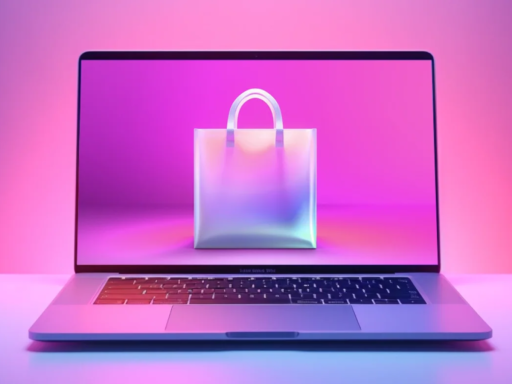The custom t-shirt printing market was worth $5.16 billion in 2024 and is expected to grow by 11.5% annually through 2030. Globally, t-shirts generate more than $46 billion in annual revenue, driven by rising demand for casual, comfortable clothing.
With online tools to help you print and sell t-shirts, it’s never been easier to start a t-shirt business.
This guide explains seven steps to starting an online shirt business that generates monthly income.
How to start a t-shirt business: 7 steps
- Choose a niche
- Source materials and printing partners
- Create t-shirt designs
- Mock up your t-shirts
- Validate your t-shirt designs
- Register your business and write a plan
- Set up your online store
1. Choose a niche
Successful online t-shirt businesses find ways to stand out from the crowd. One of the best strategies for differentiating your products from those of your competitors is by catering to a specific audience or interest group.
Choosing a t-shirt niche can help your online shirt business attract these motivated customers.
Generally, niches like “t-shirts with funny slogans” are too broad for a new business to successfully compete. Targeting the market for “funny t-shirts” or “t-shirts for women” may pit your business against large, established rivals.
Instead, look for sub-niches and use keyword research tools to find phrases that your target audience is searching for.
For example, sub-niches in the funny t-shirts category might be “t-shirts with slogans about doctors” or “funny t-shirts for dog owners.”
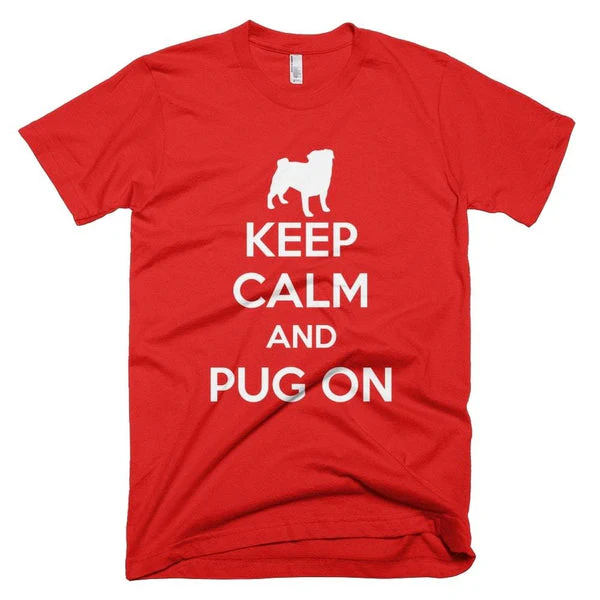
If you’re struggling to find your niche, start with a general interest topic. Then, using a mind map or brainstorming technique, think about how you can break your general topic into subtopics that have a consumer market.
For example, you might divide dogs into specific breeds, dog owner lifestyles (hiking with dogs, dog moms), or even different types of dog-related humor.
Once you have a niche in mind, estimate its market value. Here are some ways to gauge consumer interest:
- Use the Facebook IQ Audience Insights tool to gauge the size of your niche on social media.
- Visit a niche’s subreddit and check the subscriber count and level of engagement.
- Tools like Google Keyword Planner (free) or Ahrefs (paid) can help you see what people are searching for. Look for keywords with decent search volume, but that aren’t overly competitive.
- Analyze other successful t-shirt businesses to see how they cater to profitable niches.
- Consider your own interests and the communities you belong to.
Remember, the more specific your niche, the easier it will be to target your marketing and connect with passionate customers.
2. Source materials and printing partners
The next step in starting an online t-shirt business is to source your inventory. You’ll need to partner with suppliers or manufacturers that can provide the type of clothing your customers won’t be able to resist.
If you plan on selling shirts made by brands and designers, you’ll want to work with a wholesale clothing supplier. You can also connect with Shopify brands through Collective, a free supplier network that lets you browse and sell products from other Shopify merchants without buying inventory upfront.
If you envisage selling tees with original, unique designs and graphics, you’ll need a custom tee manufacturer.
Printing techniques
Not all t-shirt production methods are the same. Different printing techniques produce different results. With shirt quality associated with your brand’s reputation, take time to choose the right type of printing.
There are four popular methods for printing t-shirts. Deciding which one to use will depend on your product pricing strategy, order volumes, and design complexity.
Comparison of t-shirt printing methods
| Printing method | Best for | Cost structure | Quality | Durability | Design complexity | Minimum order |
|---|---|---|---|---|---|---|
| Screen printing | Large orders (50+ units) | Low per-unit cost for bulk | High | Excellent, long-lasting | Limited (4–5 colors max) | High minimums |
| Heat transfer | Small batches | Moderate upfront investment | Medium | Less than screen/DTG | Full-color possible | No minimums |
| Direct to garment (DTG) | Small orders, detailed designs | No setup cost, consistent per-unit pricing | High | Excellent on natural fibers | Excellent for complex designs | No minimums |
| Direct to film (DTF) | Mixed fabrics, stretchy materials | Moderate per-unit cost | High | Excellent on all fabrics | Excellent for complex designs | Low minimums |
Screen printing
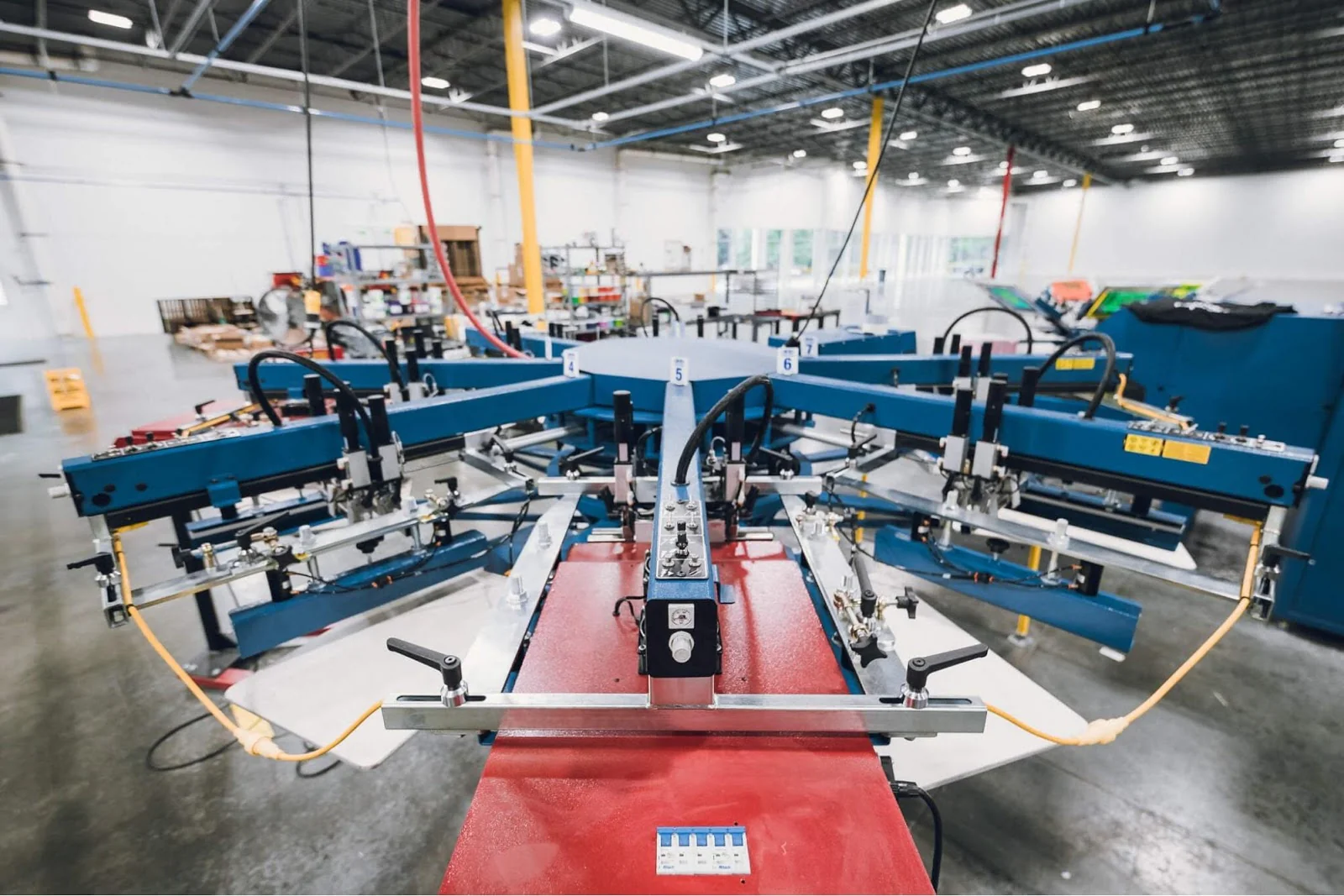
Screen printing is a technique that has stood the test of time for business owners who design and sell t-shirts online and in stores.
As one of the most popular methods for printing, screen printing can produce durable and long-lasting results. It also lets you print on products like canvas items, mugs, hats, and other things to make and sell if you want to expand your product line.
However, a labor-intensive setup means screen printing is most cost-effective when printing in bulk. Screen printing also poses issues when it comes to complex designs or designs with more than four colors, as each color increases costs and production time.
Best for: Businesses ordering more than 50 shirts with simple designs and limited colors.
Heat transfer

Heat transfers exist in several forms. For example, you may have seen basic heat-transfer paper at your local office supply store.
Although this method makes it easy to print designs from your home computer and transfer them with an iron, a more complicated process is needed when running a small business. The advanced form of heat transfer is called plastisol transfer and is printed by professional printers on high-quality, heat-transfer paper.
The advantage of heat transfers is the ability to order a stack of prints from your local printer. Then transfer them to your t-shirts with a commercial heat press machine as you receive orders. Heat transfers can produce full-color images onto t-shirts easily and quickly, making them an affordable option for small batches.
Though affordable in the long run, a heat press machine can be a large upfront cost. Also, the do-it-yourself approach requires you to invest more time making the t-shirts. The final result can be lower quality and less durable than shirts that use other forms of printing.
Best for: Entrepreneurs who want to produce small batches on demand and don’t mind hands-on production.
Direct to garment (DTG)

The direct-to-garment printing process operates like an ink-jet printer. It’s common in t-shirt printing businesses because it prints ink directly onto the t-shirt and can produce full-color images with accuracy.
DTG printing produces quality printing on par with screen printing, and is seen as more premium than heat transfer. Because it operates like an ink-jet printer, there are no setup costs, unlike screen printing. This means it’s easy and cost-effective to print small orders.
DTG works best on natural fibers like cotton and cotton-blend fabrics. The printed products have a soft, pliable feel that many customers prefer. However, DTG can struggle with synthetic materials and dark-colored garments, which may require additional pre-treatment.
The major disadvantage of direct-to-garment printing is there’s no volume discount for large orders, as it takes the same amount of time to print each shirt.
Best for: Print-on-demand businesses and stores selling custom designs in small quantities on cotton garments.
Direct to film (DTF)
Direct-to-film (DTF) printing is a newer technology that applies custom designs to apparel via image transfer. The process involves printing a design onto a special transfer film with water-based inks, coating it with adhesive powder, and heat-pressing it onto the garment.
DTF has become increasingly popular because it works with a wide range of fabrics—including synthetics like polyester, nylon, and fleece—where DTG struggles. This makes DTF ideal for athletic wear, performance fabrics, and mixed-material garments. Learn more about DTG versus DTF printing to determine which method is right for your business.
DTF typically requires lower minimum orders than screen printing but has a slightly higher per-unit cost than bulk screen printing. It’s a good middle-ground option for businesses needing flexibility across fabric types without committing to large inventory.
Best for: Businesses selling on multiple fabric types, especially athletic wear and synthetic materials, with moderate order volumes.
Price vs. quality
It can be tempting to partner with a budget supplier and sacrifice quality for higher profits. But consider how product quality impacts a customer’s decision to make a second purchase or recommend your shirts to other people.
Higher quality t-shirts might cost more to produce but can also command higher prices. Choosing the right quality of t-shirt means considering factors including fit, sizing, material, softness, and weight. Once you narrow down your choices, order some samples to make an informed final decision.
According to Ryan Bartlett, founder of True Classic, investing $800 to $1,000 in quality samples and tech packs was crucial. The investment helped his brand develop a product that addressed a real gap in the men’s apparel market. True Classic bootstrapped with just $3,000 in startup capital and grew into a multimillion-dollar business by prioritizing product quality from day one.
Remember to base your product quality decisions on expected profit margin, not just the production costs.
3. Create t-shirt designs
Not every t-shirt business needs to sell original tees—but if you do plan to design your own line of shirts, now is the time to get creative.
Your designs don’t need to be complex—in fact, many of the bestselling graphic tees are simple. However, they do need to be unique.
Research designs
Already inspired to produce the next big t-shirt trend? That’s great! If you’re struggling to come up with t-shirt design ideas, however, it can help to look at what’s currently selling well. Try browsing graphic t-shirt marketplaces such as:
Another research tip is to use Google Trends to see which topics people are currently interested in. Use trending subjects as inspiration for your t-shirt designs.
Graphic t-shirts currently account for 57% of t-shirt market revenue. This growth signals strong consumer demand for unique, personalized designs.
Hire a designer
Once you have a general idea for t-shirt designs, start sketching some drafts. If you can hand-draw illustrations or know how to use graphic design software, you likely can produce great designs yourself. However, it might make more sense to enlist some help.
There are several online sources for finding suitable graphic designers, including design communities, freelance networks, and t-shirt design marketplaces.
Design communities
Dribbble is a design community that’s home to lots of talent. Search for styles you like, then message the designer to see if they’re available for your project.

Behance hosts portfolios from creators around the world who specialize in illustrations and graphic design.

Freelance networks
General freelance networks like Upwork also contain listings of artists and illustrators. Find a qualified t-shirt designer, then check their past job successes and portfolio to see if they’re a match for your project. If you like someone, you can reach out through the platform and hire them on the spot.
T-shirt design marketplaces
Instead of hiring a designer, you can purchase pre-made designs for your t-shirt business. This route saves on upfront costs, but means other stores are likely selling your designs, so it may be harder for your products to stand out. Check out the following t-shirt graphic marketplaces:
- Tshirt Factory has a variety of vector images, from old school to punk designs.
- Creative Market has more than three million graphics and templates.
- GraphicRiver offers royalty-free Photoshop vectors and icon packs.
Keep in mind, you may need to purchase a commercial license for your images before you can use them on your t-shirts.
To ensure quality prints for your shirt-selling business, your design files should be at least 300 pixels per inch (DPI or PPI). They should also have a transparent background and be large enough to cover the actual print area of the t-shirt. Exact specifications will vary depending on the printer and printing technique used.
Need a logo for your t-shirts? Shopify has a free custom logo maker.
4. Mock up your t-shirts
Once you have final designs, the next step for your t-shirt business will be to produce mockup images. Mockups help you and your customers see what the final design will look like when it’s printed on a shirt.
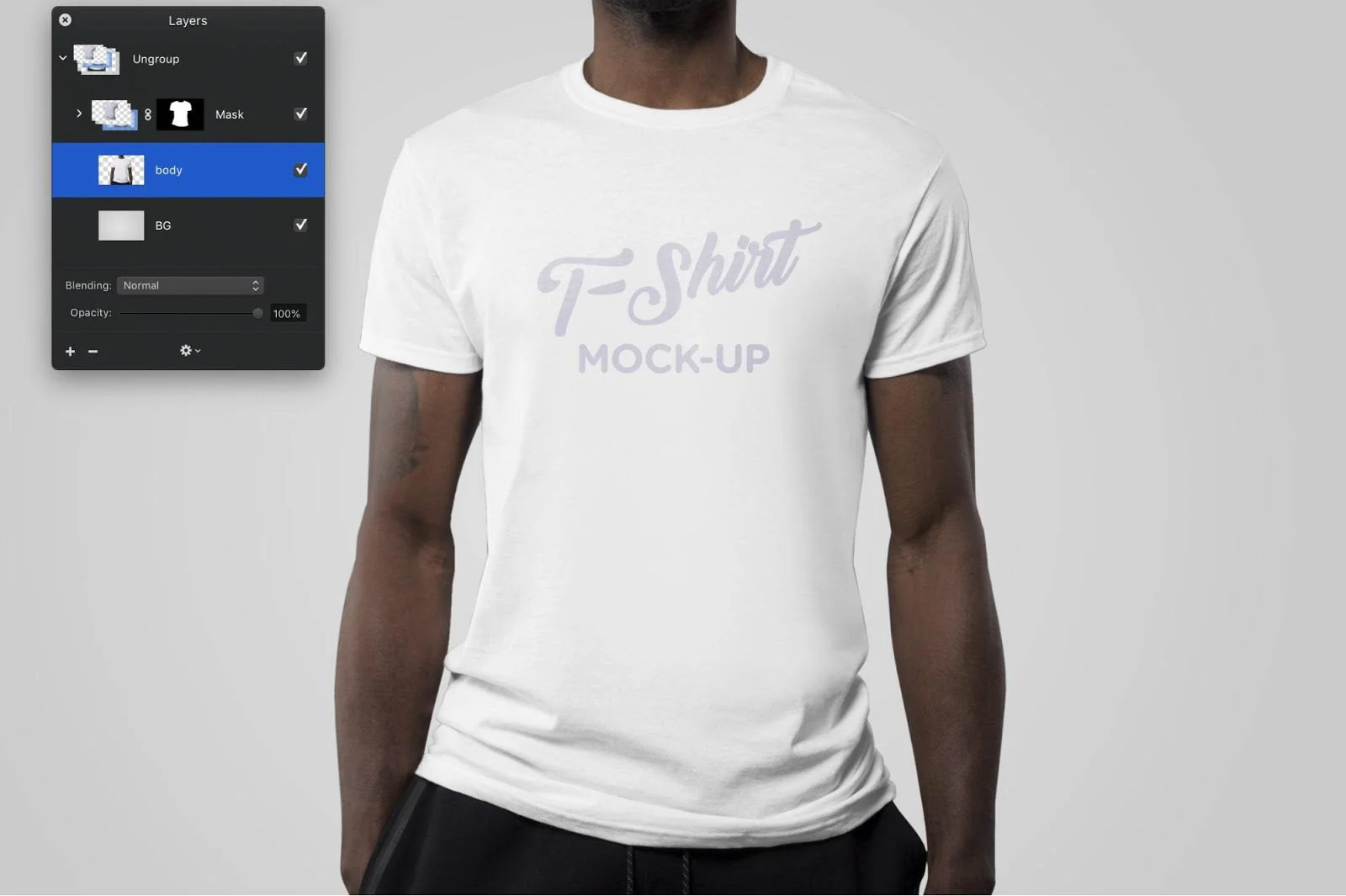
You can create mockups using web software or with an image editor like Adobe Photoshop.
T-shirt mockup templates for Photoshop come with multiple layers that let you change the color of the shirt and apply your own design that will blend with the shirt’s creases, folds, and contours.
There are also web-based mockup software that will let you create similar images without having to download Photoshop:
If you don’t like the idea of creating digital mockups, you can always order samples of your shirts and take product photos yourself.
5. Validate your t-shirt designs
Before you invest in your new business idea, test the popularity of your designs. There are many ways to validate design popularity before you sell your t-shirts online.
Common methods for validating your design ideas include:
Reach out to personal social networks
Post a preview of your designs to your social media accounts and on feeds that your potential customers visit. Be careful when asking the thoughts of friends and family, however. Their opinions can come with a favorable bias.
Allegra Shaw, founder of Uncle Studios, successfully leveraged her existing YouTube community to validate and launch her first product—a white t-shirt that became her bestselling item. With an audience that already trusted her, she launched without paid advertising and built a seven-figure clothing brand from just $5,000 in savings.
Ask Reddit
Despite the community’s general aversion to marketing, Reddit is still one of the best places to get honest feedback on your designs. Through this process, you may earn yourself some future customers and gain some free marketing along the way.
Use crowdfunding
Crowdfunding sites have made it easier to test, validate, and collect money upfront for new business ideas. Launching a crowdfunding campaign can be time-consuming and requires preparation. However, if you have a particularly novel t-shirt business idea, crowdfunding might be for you.
Here’s why you should test your t-shirt designs before you invest:
6. Register your business and write a plan
Typically, you don’t need a business license to sell t-shirts online. But, you may need a resale license to buy clothing from a distributor without sales tax.
Check with your local revenue or finance department to learn about the types of licenses or registration requirements that you may be required to get.
Business registration
Registering your business is a way of formally recognizing your t-shirt store as a legal entity. This can protect your personal assets and provide tax benefits, as well as enhance credibility with business partners, like your supplier.
The type of business structure you choose affects how your business will be taxed, and how much of your personal assets are put at risk. Common structures include:
Comparison of business structures
| Business structure | Liability protection | Tax treatment | Setup complexity | Best for |
|---|---|---|---|---|
| Sole proprietorship | None (personal liability) | Personal income tax on profits | Very simple | Testing a business idea with minimal risk |
| Limited liability company (LLC) | Yes (protects personal assets) | Pass-through taxation (or can elect corporate) | Moderate | Most small t-shirt businesses seeking liability protection |
| C corporation (C corp) | Yes (protects personal assets) | Double taxation (corporate + dividends) | Complex | Larger businesses seeking investment |
- Sole proprietorship: A sole proprietorship is the simplest form of business entity, with one owner who pays personal income tax on profits earned from the business.
- Limited liability company (LLC): The LLC structure provides a small business with the protection of a corporation, shielding owners from debts and liabilities accrued by the company.
- C corporation (C corp): A C corp structure protects personal assets but is subject to double taxation.
Business plans
While not essential, drafting an official business plan can help solidify the goals of your t-shirt business. Business plans serve as road maps, helping you outline your aims, target market, budget, and long-term strategies.
A well-thought-out business plan can also be invaluable if you ever seek funding or partnerships. A comprehensive business plan template can guide you through the process of documenting your vision, financial projections, and marketing strategy.
Pricing your t-shirts
One of the most critical elements of your business plan is determining how to price your products. Your pricing strategy directly impacts profitability and competitiveness. Here are three common pricing approaches for t-shirt businesses:
Pricing formula comparison
| Pricing method | Formula | Example | Best for |
|---|---|---|---|
| Cost-plus pricing | Total costs + desired profit % | $10 cost + 50% markup = $15 | Straightforward pricing, ensuring consistent margins |
| Keystone pricing | Wholesale cost × 2 | $8 wholesale × 2 = $16 retail | Retail businesses with standard markup expectations |
| Value-based pricing | Price based on customer perceived value | Premium brand charges $35+ based on quality/brand | Unique designs, strong brand positioning, niche audiences |
Cost-plus pricing
Cost-plus pricing involves calculating your total costs (materials, labor, overhead, shipping) and adding your desired profit margin.
Example: If your t-shirt costs $10 to produce (including blank shirt, printing, packaging, and shipping), and you want a 50% profit margin:
- Cost: $10
- Markup: $10 × 0.5 = $5
- Selling price: $15
Typical t-shirt profit margins range from 30% to 60%, depending on your niche, quality, and production method.
Keystone pricing
Keystone pricing is a retail pricing strategy where you simply double the wholesale cost of a product. This rule-of-thumb approach is popular because it’s easy to implement and typically delivers healthy gross margins.
Example: If you buy or produce a t-shirt for $8:
- Wholesale cost: $8
- Keystone markup: $8 × 2 = $16
- Selling price: $16
This method works well for businesses that need consistent, predictable margins across multiple products.
Value-based pricing
With value-based pricing, customer perception and willingness to pay—rather than production costs—determine your price. This strategy works best for businesses with unique designs, strong brand positioning, or products solving specific problems for their target audience.
Example: A premium streetwear brand with exclusive designs might charge $50 per shirt, even if production costs are only $12. That’s because customers value the brand, design uniqueness, and community association.
Value-based pricing requires deep understanding of your target market and strong brand differentiation, but can deliver the highest profit margins.
Use Shopify’s profit margin calculator to experiment with different pricing scenarios and understand how costs impact your bottom line.
7. Set up your online store
With your t-shirt designs commissioned, mock-ups created, and feedback acquired, it’s time to build your online store.
Setting up an online store might sound daunting, but it’s really just a series of simple steps that anyone can follow:
Domain names
Think of a domain name like your home address on the internet—it’s how your customers find you.
Choose a name that’s short, catchy, and easy to remember. Ideally, your domain should reflect your brand and the fact that your store specializes in t-shirts. Once you’ve picked a name, register it to make it officially yours.
Building your site
Creating a website is your chance to make a great first impression, so it’s important to get it right. Use a drag-and-drop store builder to build a professional-looking site, complete with product pages, collections, and information about your brand. Choose a store theme aligned with your shirts’ style.
Focus on making your site easy to navigate, with clear categories and a simple checkout process.
Other sales channels
While your website will become the main hub for your brand and product collection, don’t overlook other platforms where you can reach customers.
Marketplaces like Etsy, Amazon, and eBay are great for expanding your presence. When you run a Shopify store, you can quickly list your products on marketplaces and manage them from your store dashboard, using the Marketplace Connect app.
Having a multichannel presence helps you reach customers wherever they prefer to shop.
Connecting a print-on-demand app
If you’re using a print-on-demand service to produce your tees, it’s easy to integrate your products with a Shopify store. Simply choose and download a print-on-demand app.
Once integrated, customers can then visit your store to browse your tees. When they make a purchase, your print-on-demand partner will produce and ship the items.
Try these t-shirt printing apps that integrate directly with Shopify stores:
- Printful. Industry leader with extensive product catalog and warehousing options.
- Gelato. Global print network with local production in 32 countries for fast shipping.
- Printify. Access to more than 90 print providers with competitive pricing.
- Teelaunch. Premium quality printing with no monthly fees.
- Apliiq. Unique branding options including custom labels and packaging.
Print on demand is particularly attractive for new entrepreneurs because it requires minimal upfront investment. You only pay for products after customers place orders, eliminating inventory risk entirely.
Marketing your t-shirt business
Once your store is live, attracting customers becomes your primary focus. Here are proven marketing strategies for t-shirt businesses:
Social media marketing
Platforms like Instagram, TikTok, and Pinterest are visual-first channels perfect for showcasing t-shirt designs. Post lifestyle photos, behind-the-scenes content, and customer testimonials to build engagement. Learn more about creating an effective marketing plan for your business.
Influencer partnerships
Collaborate with micro-influencers (1,000 to 100,000 followers) in your niche. These creators often have highly engaged audiences and charge reasonable rates or may accept free products in exchange for authentic promotion.
Content marketing
Create blog posts, videos, or social content around topics your target audience cares about. For example, a dog-themed t-shirt brand might create content about dog training, dog care tips, or funny dog stories. Explore more marketing strategies to grow your business.
Email marketing
Build an email list from day one. Offer a discount code for first-time subscribers, then send regular updates featuring new designs, customer stories, and exclusive offers.
Paid advertising
Once you validate product-market fit, invest in paid ads on Facebook, Instagram, or Google. Start with small budgets ($5 to $10 per day) and test different audiences and creative variations. True Classic’s founders allocated $2,000 of their initial $3,000 budget to Facebook ads and carefully tracked return on ad spend to stay profitable.
Partnership marketing
Like Michelle K. Hanabusa’s clothing brand, Uprisers, consider partnerships with complementary businesses or organizations that align with your brand values. This can help you reach new audiences.
Success story: An anime-inspired t-shirt store
Many entrepreneurs have been successful in starting a shirt-selling business. For example, Ryan McCarthy, founder of Imouri (formerly Sugoi), has used Shopify to run his anime-inspired t-shirt printing business since 2016.
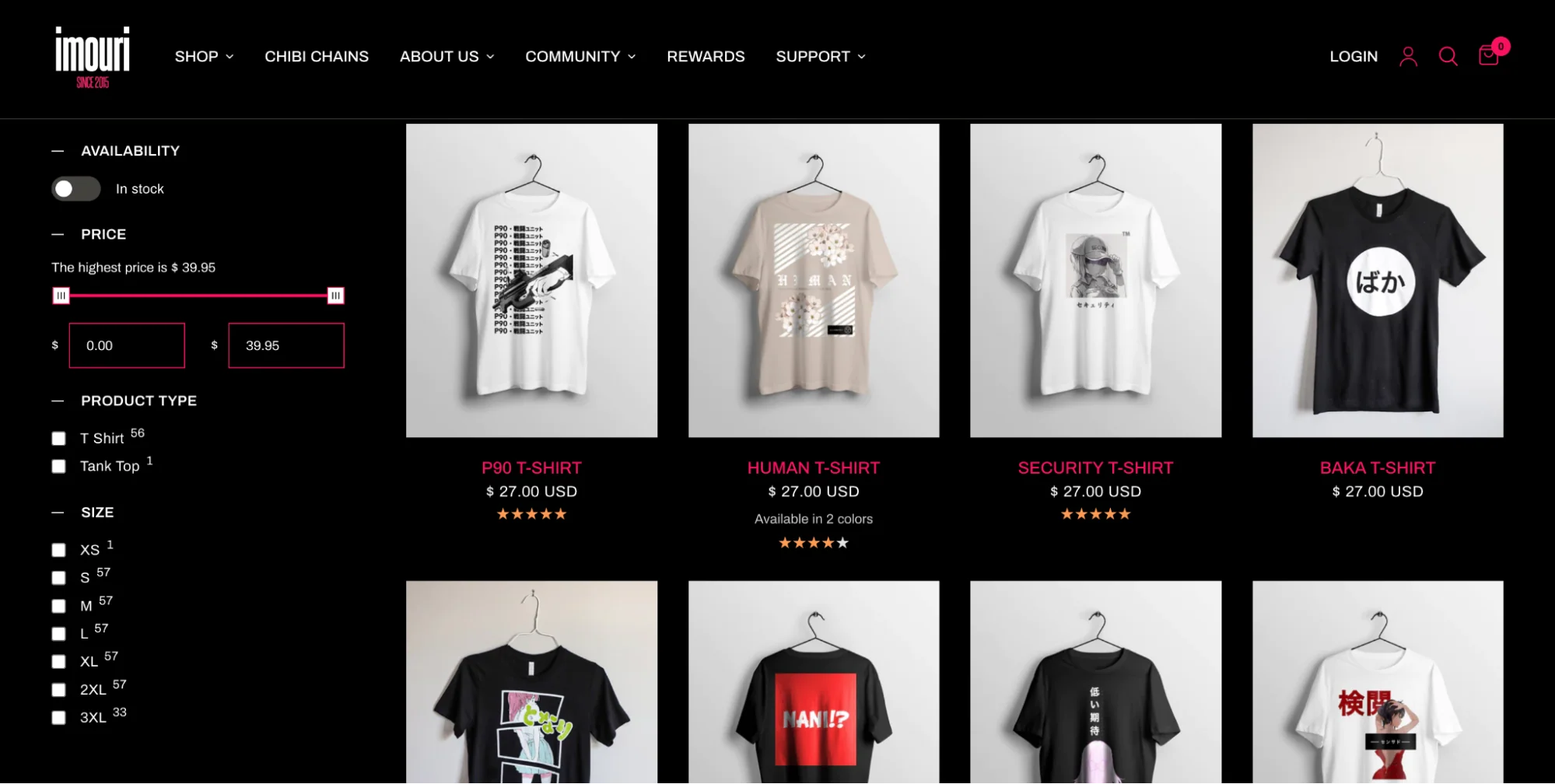
Ryan decided to create his t-shirt business when he couldn’t find anime-themed clothing that fit his personal style. He quietly launched what he thought would be a small clothing business, which has since turned into a six-figure print-on-demand apparel company selling streetwear inspired by Japanese pop culture and anime.
His secret to successfully starting a clothing line? Identifying winning designs early on by using Reddit and paid ads to test products.
Start your t-shirt business today
It’s never been easier to express your creativity and sell t-shirts online.
Whatever niche you choose to serve, and however ambitious you are with your quality and designs, a t-shirt store can be a great first ecommerce business for new entrepreneurs.
Shopify can help you start selling and control your costs. Connect your store to a t-shirt printer in minutes and launch a catalog that your customers will love.
Illustration by Alice Mollon
T-shirt business FAQ
How much does it cost to start a t-shirt business?
How much can you make selling t-shirts?
The amount you make selling t-shirts depends on factors including your chosen niche, production methods, pricing, and marketing strategy. Typical t-shirt profit margins range from 30% to 60%. A small business selling 100 shirts per month at $25 each with a 40% profit margin would generate $10,000 in monthly revenue and $4,000 in profit. Successful t-shirt businesses can scale to six or seven figures annually with the right product-market fit and marketing.
Is a t-shirt business profitable?
How do I market my t-shirt business online?
Try social media marketing on platforms such as Instagram, TikTok, Pinterest, and Facebook. Social marketing channels include running ads, collaborating with micro-influencers (those with 1,000 to 100,000 followers), and posting engaging content (images, videos, customer testimonials). Build an email list from day one to nurture relationships with customers. Consider partnerships with complementary brands or organizations that share your target audience. Start with organic content to validate your designs, then invest in paid advertising once you have proven winners. Learn more about how to build a brand that resonates with your audience.
What are the best t-shirt printing methods for small businesses?
Print-on-demand is great for starting with low risk and no inventory. Direct-to-garment (DTG) printing offers high quality and is good for small batches on cotton and natural fiber garments. Direct-to-film (DTF) printing works across a wider range of fabrics including synthetics and is ideal for athletic wear. Screen printing is cost-effective for large orders (more than 50 units) but requires higher minimums. Choose based on your business model: print on demand for testing, DTG or DTF for small-to-medium runs, and screen printing when you’re ready to scale with proven designs.
What should I do before selling t-shirts?
- Conduct market research on a niche and find a passionate community.
- Come up with a t-shirt company name.
- Make a business logo and set up an online shop.
- Create your own t-shirt designs or source pre-made graphics.
- Order samples to validate quality.
- Set up your social media accounts.
- Validate designs with your target audience through social media, Reddit, or crowdfunding.
- Plan your pricing strategy using cost-plus, keystone, or value-based pricing models.
- Connect with print-on-demand partners or manufacturers.
- Build a marketing plan focused on your niche audience.
How can I start my own t-shirt business with few upfront costs?
If you want to start a t-shirt business without a significant initial investment, create a Shopify store and integrate a print-on-demand app such as Printful, Gelato, or Printify. With print on demand, you pay nothing upfront for inventory—products are manufactured only after customers place orders. This eliminates inventory risk and lets you test multiple designs with minimal financial commitment. Focus your initial budget on creating quality designs and basic marketing to drive traffic to your store.






